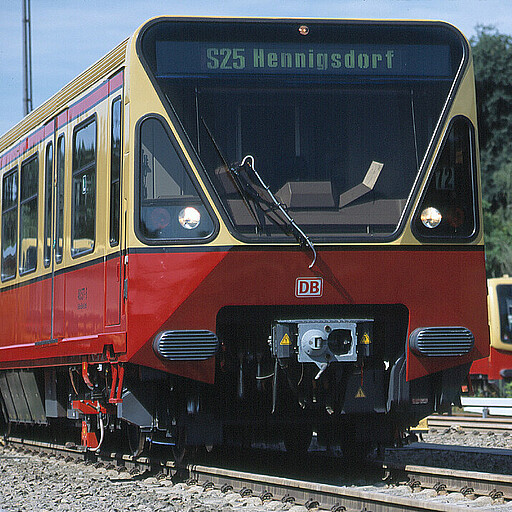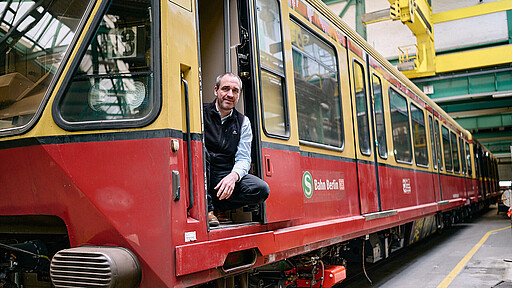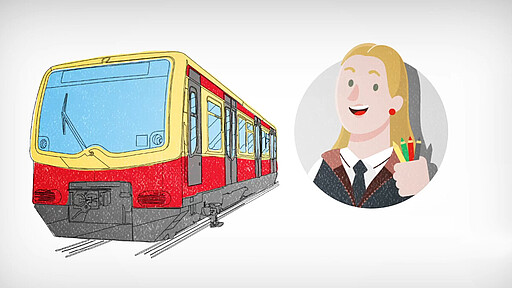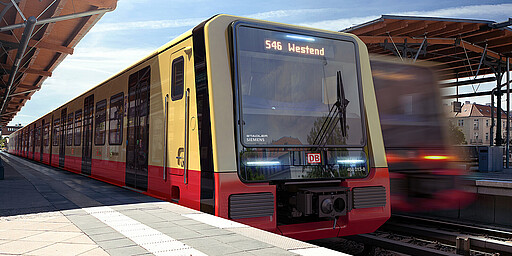Our 480 series
Operator cabs at both ends of the quarter train make our oldest series especially versatile.
A child of the West
During the Cold War, all Berlin S-Bahn services were operated by the East German Reichsbahn. In 1984, Berliner Verkehrsbetriebe (BVG) assumed operation of all West Berlin S-Bahn routes – and urgently needed a fleet of new trains.
The 480 series interior
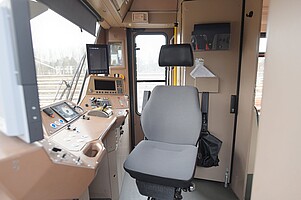
Driver’s cab of the 480 series
An operator cab at both ends of the quarter train made this series especially flexible.
- ©
- Oliver Lang
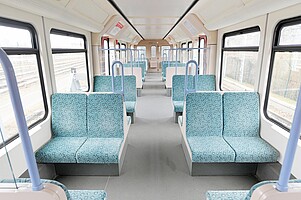
480 series interior
Spacious: every 480 series twin carriage offered 92 seats and standing room for a further 250 passengers.
- ©
- Oliver Lang
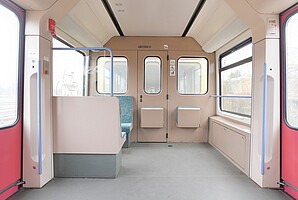
480 series multi-purpose compartment
The multi-purpose compartment facilitates the transport of prams, wheelchairs, and bicycles.
- ©
- Oliver Lang
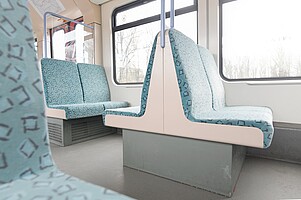
480 series seating
Connect four: apart from folding seats, all 480 series trains feature 4-seater arrangements only.
- ©
- Oliver Lang

480 series upholstery pattern
Originally, all seats were covered in BVG’s iconic “worm pattern”. The current distinctive seating design was introduced at a later date.
- ©
- Oliver Lang
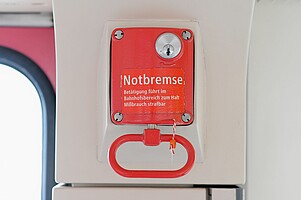
480 series emergency brake
Each S-Bahn train has an emergency break near the doors.
- ©
- Oliver Lang
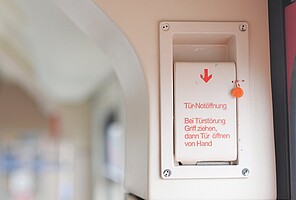
480 series emergency door release
Each door features an emergency unlocking mechanism for manual opening in case of emergency.
- ©
- Oliver Lang
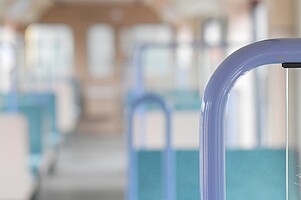
480 series interior
A striking design feature: the purple handrails.
- ©
- Oliver Lang
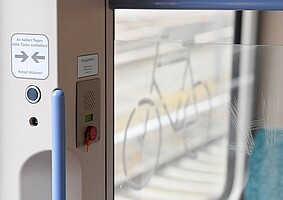
480 series emergency intercom
An emergency intercom near each door area connects passengers with the S-Bahn Berlin security control centre. The train driver can listen in on this call and react accordingly.
- ©
- Oliver Lang
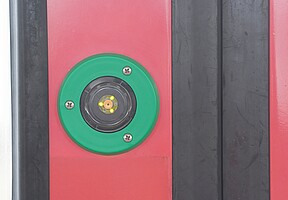
480 series door opener
If required, passengers can easily open or close the doors by hand with the press of a button.
- ©
- Oliver Lang
A first prototype was introduced in 1985 – back then in a blue colour scheme, but this design was soon abandoned. The train’s angular front also met with some initial scepticism, but Berliner’s soon embraced the new series as their beloved “toaster”.
There are many legends surrounding the nickname of the series, which we would like to bring back into the realm of facts at this point: There was a popular toaster from Siemens at the time - and it was called the BR 480, just like the new S-Bahn.
The flexible choice
Thanks to the positioning of driver's cabs at both ends of a quarter-train, the 480 series proved particularly flexible and versatile: the twin unit set-up allowed the S-Bahn to run standalone quarter trains during off-peak hours. The new 483/484 series also follows this design template.
Future-proofing our 480 series!
The first 45 quarter trains were delivered from 1990. A second delivery in 1993 and 1994 increased the stock by 40 quarter trains. Today, 65 of these 480 quarter trains are still in use.
Originally, the end of service for the class 480 was planned for December 2023. However, S-Bahn Berlin is now planning to keep the Class 480 vehicles in service for another four to seven years. For this reason, the state of Berlin and S-Bahn Berlin have invested in the Projekt "Continued operation 2023+" project in recent years, which is nearing completion at the beginning of 2025.
The 480 series exterior
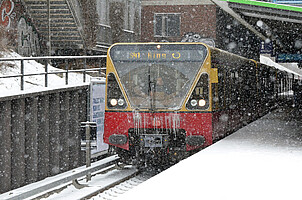
480 series
During winter at Hermannstraße station
- ©
- S-Bahn Berlin/Jens Wiesner
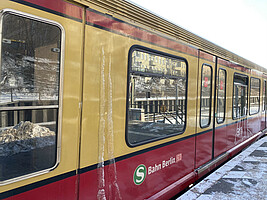
480 series
During winter at Hermannstraße station
- ©
- S-Bahn Berlin/Jens Wiesner
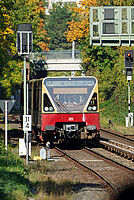
480 series
On the S-Bahn ring
- ©
- Deutsche Bahn AG/Volker Emersleben
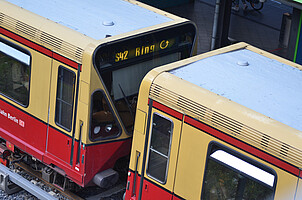
S42 at the Hermannstraße stop
- ©
- Jens Wiesner
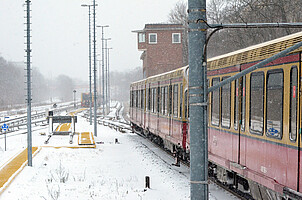
480 S-Bahn series
During winter at Hermannstraße station
- ©
- S-Bahn Berlin
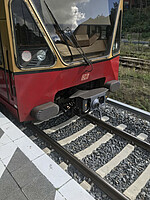
480 series
Frontal view
- ©
- Jens Wiesner/S-Bahn Berlin
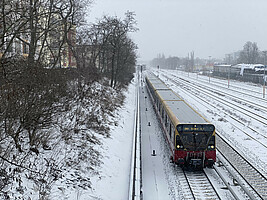
480 series
Wintry departure from Neukölln station
- ©
- Jens Wiesner/S-Bahn Berlin
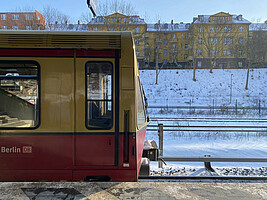
480 series
During winter at Hermannstraße station
- ©
- Jens Wiesner/S-Bahn Berlin
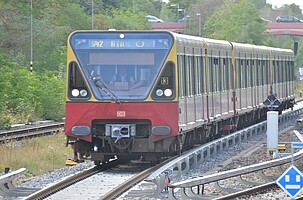
480 series
At Hermannstraße station
- ©
- Jens Wiesner/S-Bahn Berlin
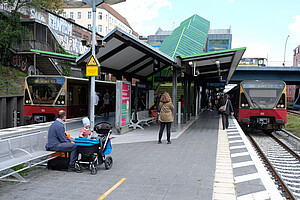
480 series
At Hermannstraße station
- ©
- Jens Wiesner/S-Bahn Berlin
Mind the doors!
Four doors per side: for more than six decades, this was the standard set-up of Berlin’s S-Bahn trains. This changed with the 480 series. The carriage’s engineers broadened the exits to facilitate access for prams and wheelchair users. Now the motto is: all good things come in threes.
Historical photos of the 480 series
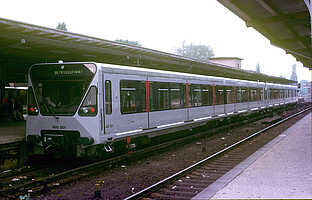
480 series
The only two prototype quarter-length trains of the 480 series in crystal blue (480 001/501 and 480 002/502) at Wannsee station in July 1987
- ©
- Erhard Schulz / Sammlung: Norbert Walter
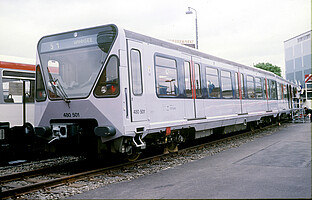
480 series
The crystal blue prototype quarter train 480 001/501 was shown at the International Transport Exhibition IVA in Hamburg in June 1988.
- ©
- Erhard Schulz / Sammlung: Norbert Walter
| Technical specifications | |
|---|---|
| Specification: | twin carriages |
| Quantity: | 65 quarter trains |
| Gauge: | 1435 mm |
| Length per quarter train: | 36.800 mm |
| Vehicle width: | 3.120 mm |
| Vehicle height: | 3.600 mm |
| Floor height: | 1.100 mm |
| Seats (additional standing capacity): | 92 (200) |
| Bogie axle base distance: | 2.200 mm |
| Drive wheel diameter: | 900 mm |
| Supply voltage: | 750 V DC |
| Maximum speed: | 100 km/h |
| Maximum acceleration: | 1,3 m/s² |
| Performance: | 8 x 90 kW = 720 kW |
| Empty weight: | 59,0 t |
| Tensile force: | 104 kN/208 kN |
